
Stick bugs (AKA walking sticks, stick insects, or bug sticks) are amazing little bugs that are masters of disguise. They can be found in many different places across the globe but they all share one common trait: the ability to remain incredibly still and blend into trees, branches, and bushes. People say you are what you eat, but bugs take that saying to heart. They often mimic the color, shape, and even texture of the food they consume. Please read on to learn about stick bugs and how unique of an insect species they are.
What are Stick Bugs?
Stick bugs’ names are pretty self-explanatory. they are excellent camouflagers who can resemble and look like sticks. Some even look like leaves. These insects move very slowly and usually have a specialized diet. They are part of the order phasmatodea. It is derived from the Greek word phasma meaning phantom due to their ability to seamlessly blend into their surroundings.
Stick Bug Characteristics
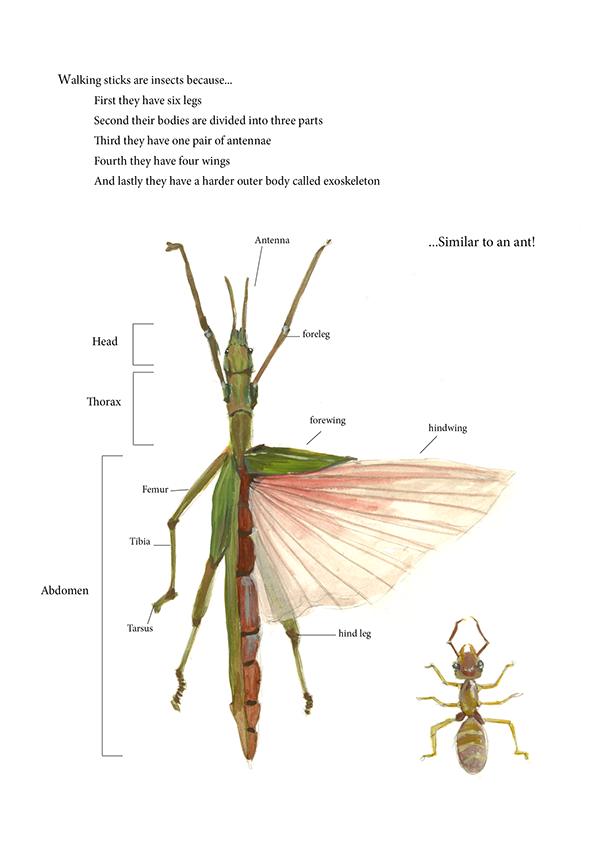
Stick bugs are masters of disguise and all stick bug species share the same adaptation of blending into their environment through means of looking like the stem, leaf, or branch of a plant. Some species have small wings but are not able to fly with them. They have two compound eyes that allow them to perceive their surroundings in great visual detail, even in dim lighting. this is due to the nocturnal nature of most stick bug species. Their feet have ‘toe pads’ which help them grip onto surfaces without falling.
If camouflage fails, some species have other anti-predator defenses. Some stick bugs are capable of making loud hissing noises and flashing bright colors to startle predators off. Others will willingly fall off a branch if a predator tries to attack them. One stick bug species, the spiny leaf insect, will curl up its abdomen to mimic the appearance of a scorpion or ant. Other stick bugs will have spines on their forearms and use them to grasp at their attacker and draw blood. A few stick gub species have glands that secrete toxic or foul-smelling liquids to scare predators off. One such stick bug is the peppermint stick bug, which sprays a chemical that smells like a peppermint stick. They are mostly found in tropical and subtropical regions. If you want to learn more about the peppermint stick bug this article can give you more information.
Where Are Stick Bugs Located?

Stick bugs are located on every continent except Antarctica and Patagonia. A lot of stick bug species can be found in Asia and South America. One place, an island off the coast of Borneo, is home to over 300 species of stick bugs!
Stick Bug Life Cycle
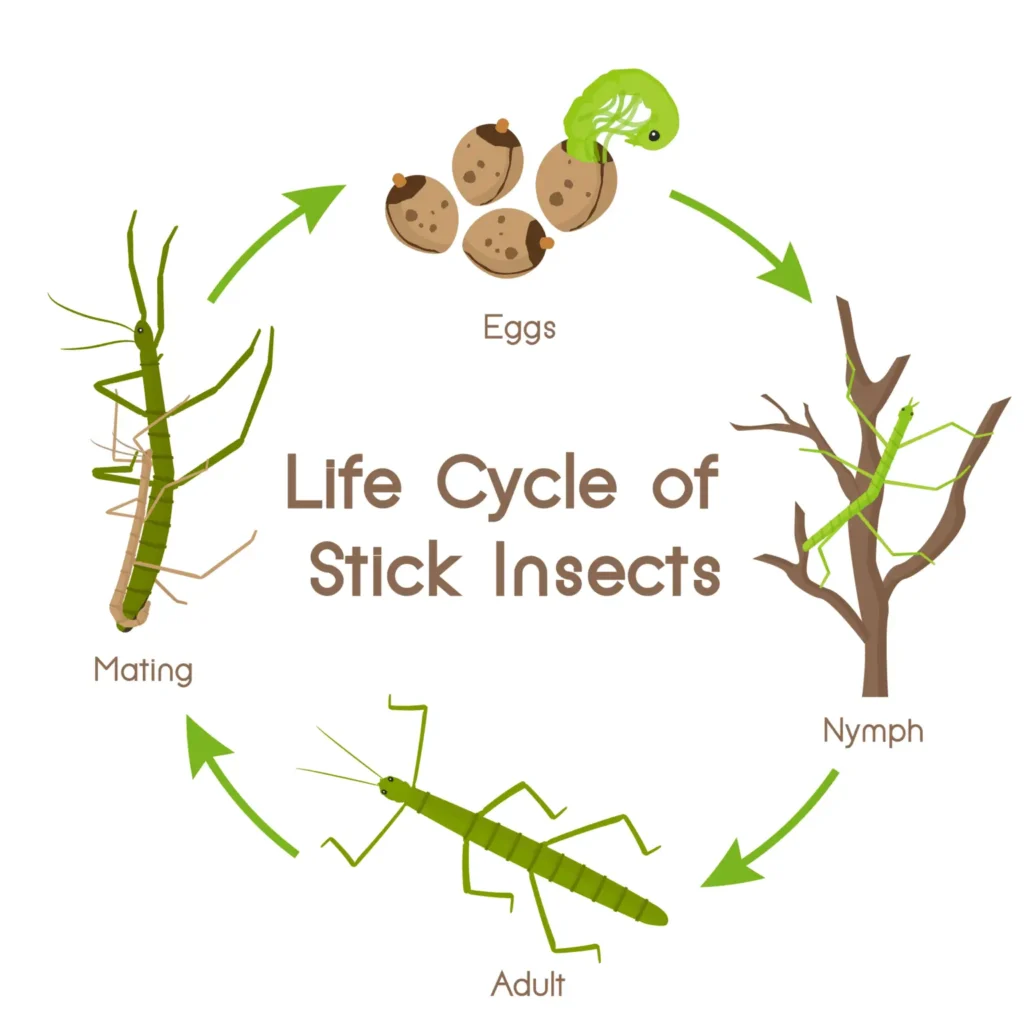
Stick bug’s life cycles are split into 3 parts: egg, nymph, and adult. An interesting tidbit about stickbugs is that many stick bugs can reproduce parthenogenetically. (That’s a $10 word!) that means that they can produce fertilized eggs without the need for a male. Stick bugs that hatch this way are the closest things to clones because they are exact copies of their mother. Parthenogenesis is a way for stick bugs to continue their lineage if the availability of males is limited.
Female stick bugs will lay an egg, either on a plant or in the ground. She will leave her offspring, who can hatch in either a few weeks or a month depending on the species and the climate. If eggs are laid in temperate regions, the eggs will undergo diapause, which means they will stay dormant during the winter months until it gets warmer.
Once babies hatch out, they will look like mini-grown-ups. They will continue to molt several times until they grow into an adult stick bug. Molting is when an insect outgrows its old skin and it needs to shed out of it. When they do, they will have new skin, which can take a few hours to harden. Once they do, they will go a few days or weeks until they molt again. Once they are adults they do not need to molt anymore. The lifespan of a stick bug can last from a few months to up to three years depending on the species. Speaking of species, I’ll be eager to talk about my top 5!
My Top 5 Favorite Stick Bug Species
Giant Malayan Stick Insect (Phobaeticus serratipes)

This is one of the longest-known insect species. They are huge and can grow over 21.9 inches! They are an impressive behemoth to behold. Maybe at a distance for some people.
Leaf Insect (Pulchriphyllium anangu)

I really admire the fact that they not only mimic the color and shape of the leaf, but they also mimic the minute details of a leaf. From mimicking the veins of leaves, the irregular shapes of leaves, to even displaying brown discolorations that resemble a decaying leaf, this insect is practically 90% leaf!
Metallic Stick Insect (Achrioptera manga)

This stick insect is native to Madagascar and the Comoros archipelago. This insect stands out with its bright blue color and can reach 9.1 inches long. If you are wondering, the second part of its last name ‘manga’ is not related to Japanese manga comics. In fact, “manga” is derived from the Malagasy language adjective for “blue”.
Creosote Walking Stick (diapheromena covillae)

Even though they are plain-looking compared to the others on the list, I am biased towards them. These walking sticks are near and dear to me since I am currently growing a colony of them. Since they are parthenogenetic species, they can produce with males. They usually lay white eggs the size of a grain of rice, and the cute little babies hatch out of them. When my colony gets too big, I usually release the babies back into the wild. As a word of advice, NEVER release stick bugs into the wild if they are not native to your area. They will either die, or become an invasive species that can harm native animals. You can learn more about my stick bug journey here.
Goliath Stick Bug (Eurycnema goliath)
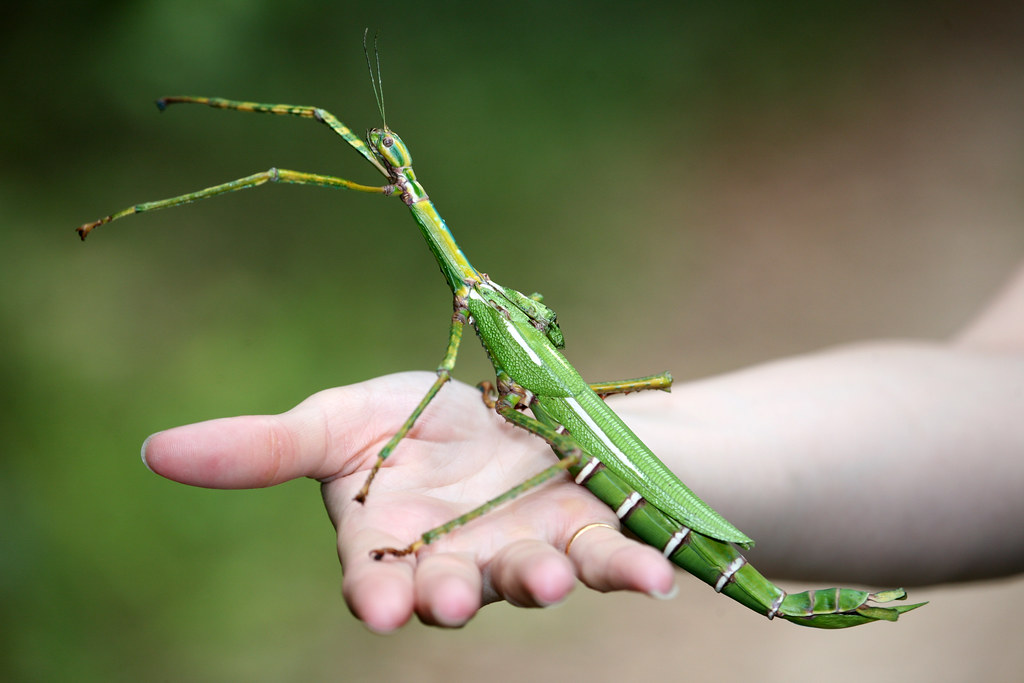
This huge stick bug is located in Australia. These huge insects will feed on Eucalyptus and Acacia leaves, but will feed on oak, bramble, and Hawthorn leaves. When these insects feel threatened, they will reveal the bright, red underside of their wings and spread out their hind legs. They will repeatedly strike their hind legs together and make a ‘swooshing’ sound with their wings to scare off any potential threats. Besides this impressive display, they take preventative measures to avoid predators as well. When they defecate, they will flick their feces away so that the smell might not attract the attention of unwanted predators.
Conclusion
I hope you enjoyed what I had to share about stick insects. I find them to be fascinating insects and are among my favorite critters to take care of. If you are interested in taking them on a pet, I have an article that will give you a lot of useful information. Thank you for reading!
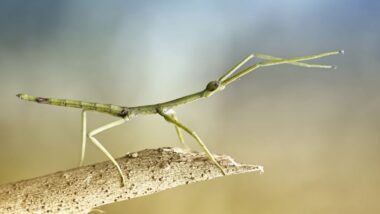
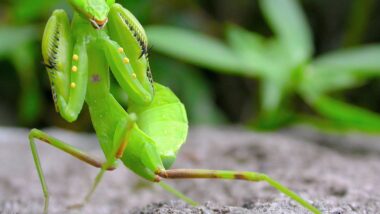
Pingback: Stick Bug Pet Care: Setup Enclosure, & Feeding - Bug Bushel